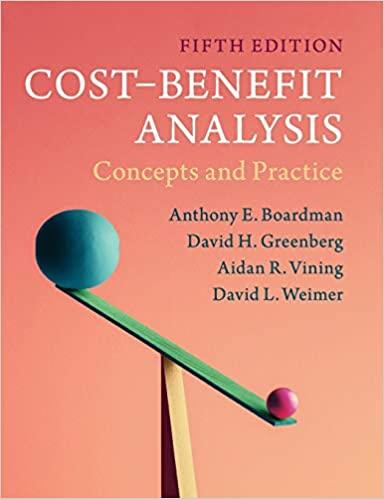Question
11. INVENTORY METHODS: Co. C has the following units of beginning inventory and purchases for the year: beginning inventory 300 units at $20 each and
11. INVENTORY METHODS: Co. C has the following units of beginning inventory and purchases for the year: beginning inventory 300 units at $20 each and a 2/28 Purchase 300 units at $30 each. Using the FIFO method, if the ending inventory is 200 units, what is the cost of the ending inventory?
|
| A. 10,000 | |
|
| B. 8,000 | |
|
| C. 6,000 | |
|
| D. 4,000 | |
|
| E. None of the above |
12. FINANCIAL STATEMENTS: In the income statement if total revenues are 30,000 and total expenses are 20,000, how much is the net income?
|
| A. 50,000 | |
|
| B. 30,000 | |
|
| C. 20,000 | |
|
| D. 10,000 | |
|
| E. None of the above |
13. BANK RECONCILIATION: In a bank reconciliation if the outstanding checks are 15,000, what is the journal entry to record the outstanding checks?
|
| A. Dr. Outstanding Checks 15,000 Cr. Cash 15,000 | |
|
| B. Dr. Cash 15,000 Cr. Outstanding Checks 15,000 | |
|
| C. Dr. Outstanding Checks 15,000 Cr. Deposit in Transit 15,000 | |
|
| D. Dr. Deposit in Transit 15,000 Cr. Outstanding Checks 15,000 | |
|
| E. None of the above |
14. JOURNAL ENTRIES: What is the journal entry to record the following transaction: The owner, Marcia Ramos withdrew 7000 from her business?
|
| A. Dr. Cash 7,000; Cr. Marcia Ramos, Capital 7,000 | |
|
| B. Dr. Marcia Ramos, Capital 7,000; Cr. Cash 7,000 | |
|
| C. Dr. Cash 7,000; Cr. Marcia Ramos, Withdrawals 7,000 | |
|
| D. Dr. Marcia Ramos, Withdrawals 7,000; Cr. Cash 7,000 | |
|
| E. None of the above |
15. FINANCIAL STATEMENTS: For Company Y in the statement of owners equity for January 2020 the owner contribution was 20,000, the net income for January was 15,000, the owner withdrawal 30,000 and the ending capital at 1/31/20 was 35,000. How much was the beginning capital balance on 1/1/2020?
|
| A. 40,000 | |
|
| B. 35,000 | |
|
| C. 30,000 | |
|
| D. 25,000 | |
|
| E. None of the above |
16. INVENTORY METHODS: Co. Z. has the following units of beginning inventory, purchases and total sales for the year: Beginning inventory 400 units at $10 each, Purchase 6/1 300 units at $15 each, Purchase 9/1 300 units @ 20 each, and total sales for the year of 600 units. How many units are in ending inventory?
|
| A. 600 | |
|
| B. 500 | |
|
| C. 400 | |
|
| D. 300 | |
|
| E. None of the above |
17. INVENTORY METHODS: Co. T has the following beginning inventory, purchases and ending inventory: Beginning inventory 200 units at $10 each, Purchase 6/1 400 units at $15 each, Purchase 9/1 400 units @ 20 each, and ending inventory 300 units. If the average cost per unit is $16, using the average cost method, what is the cost of the ending inventory?
|
| A. 10000 | |
|
| B. 6400 | |
|
| C. 4800 | |
|
| D. 3300 | |
|
| E. None of the above |
18. JOURNAL ENTRIES: Using the perpetual method, what is the journal entry to record the purchase of $4,000 of merchandise inventory on account?
|
| A. Dr. Merchandise Inventory 4,000; Cr. Accounts Receivable 4,000 | |
|
| B. Dr. Accounts Payable 4,000; Cr. Merchandise Inventory 4,000 | |
|
| C. Dr. Accounts Payable 4,000; Cr. Purchases 4,000 | |
|
| D. Dr. Purchases 4,000; Cr. Accounts Receivable 4,000 | |
|
| E. None of the above |
19. SPECIAL JOURNALS: In which journal is a purchase return recorded?
|
| A. Cash Receipts | |
|
| B. General | |
|
| C. Purchases | |
|
| D. Sales | |
|
| E. None of the above |
20. SPECIAL JOURNALS: In which journal is an adjusting entry recorded?
|
| A. Cash Receipts | |
|
| B. General | |
|
| C. Purchases | |
|
| D. Sales | |
|
| E. None of the above |
Step by Step Solution
There are 3 Steps involved in it
Step: 1

Get Instant Access to Expert-Tailored Solutions
See step-by-step solutions with expert insights and AI powered tools for academic success
Step: 2

Step: 3

Ace Your Homework with AI
Get the answers you need in no time with our AI-driven, step-by-step assistance
Get Started


